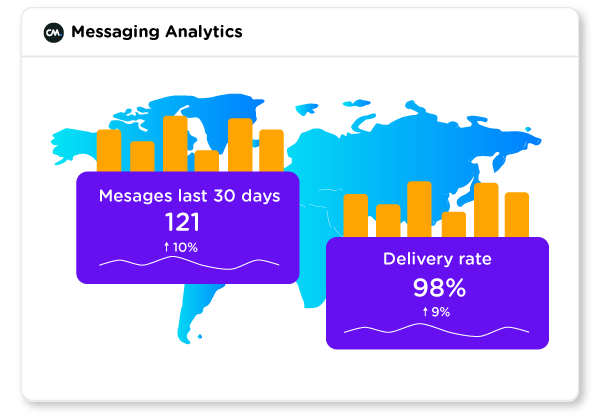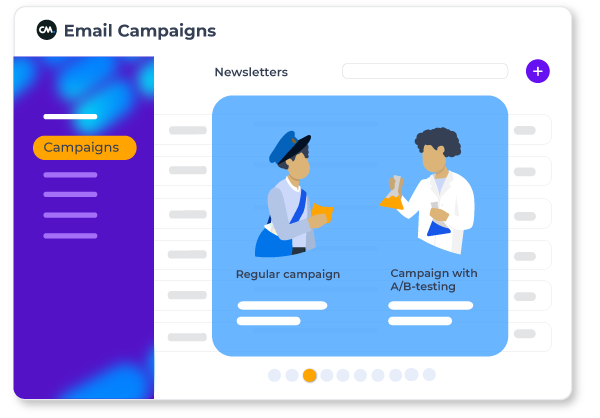- Conversion Optimization for Mobile Marketing
- 6 Steps for Conversion Optimization
- 1. Establish a Mobile Marketing Baseline
- 2. Analyse Results and Improve
- 3. Determine Your Goal
- 4. Form Your Hypothesis
- 5. Set Up the Test
- 6. Analyse the Results
- Get Started With Mobile Marketing Cloud
A lot of businesses don’t use SMS and Email marketing to their full potential, as they don’t always use the right techniques to improve the open- or conversion rates of their marketing messages. Once you know how to get started with the conversion optimization of your SMS or email marketing campaigns, you will be able to significantly increase your conversion rate and utilize your marketing channels to their full potential.
Conversion Optimization for Mobile Marketing
Conversion optimization for Mobile Marketing is the process of testing and experimenting to improve all possible facets of your campaign. This can be the headline, the text in the message itself, the audience you’re sending it to, the time of day, and more. Everything that your message encompasses can be subjected to optimization.
If you want to start optimizing your messages, it’s best to do so in a structured way. The structure ensures that you can learn from these results later on and that you don’t just start testing things based on gut feeling.
6 Steps for Conversion Optimization
1. Establish a Mobile Marketing Baseline
To find out whether a new version of your message performs better, you first need to know how it has performed in the past. Establish a marketing strategy to compare the results of your new message to. Be sure to note any relevant results like the number of recipients, time of day, day of the week, time of the month (e.g. did you send the message around pay-day or just before when everyone postpones spending money until their paycheck arrives?), open rate, click-through-rate (CTR), amount of conversions (note: specify what a conversion is for you), conversion rate, and anything else of importance.
2. Analyse Results and Improve
To learn how your message can be improved, it’s important to analyze the results. What parts of your message are not performing as well as they could? Is the open rate lower than expected? Or are people opening your message, but not taking any further action based on the contents of the message? Your analysis will tell you which parts of your message can do better and will help you to formulate your goal.

3. Determine Your Goal
If your open rate is low, your goal will be to start improving that. If there are multiple parts of your message that you would like to improve, start with identifying the most important one. If, for example, your open rate and click-through rate of the message’s contents are low, it would be better to first work on the open rate. After all, no one is going to see your improved content if no one is opening it in the first place. So, determine your goal and let that direct your focus towards the thing that needs improvement most.
4. Form Your Hypothesis
By now, you have a pretty clear idea of what you need to improve to reach your goal. But how are you going to do that? You need to form a hypothesis about what you think would work better than the message you have now. You may already have some ideas about things that might work based on previous experiences. Or you may have no idea where to start. You can start by evaluating some email/SMS marketing best practices and see whether these would fit for your business. You will only know whether these are suitable for you once you start testing, but it gives you a solid starting point.
5. Set Up the Test
Once you have done the analysis, determined your goal, and formulated your hypothesis, it’s time to set up your test. The best way is to do an A/B test. An A/B test compares version A (the original version) to changes made in version B while all other conditions are kept the same. If you send the test to a big enough group of recipients and all conditions (e.g. time of day, day in the week, type of audience, etc.) are kept the same, an A/B test will let you conclude whether the results can be attributed to the made changes or whether they happened due to chance.

This depends on your sample size. You need to send it to a big enough group of people to be able to determine whether the results you achieved are significant. You can use a sample size calculator to determine how big your sample needs to be so you can be sure that the result you’re getting is due to the changes you made and not due to chance.
If you’re working with CM.com’s platform, use the Address Book app to randomly divide your recipients into two marketing groups. Make two separate campaigns, one for version A and one for version B. Keep everything in the campaigns the same except for the element you want to test. Set up your message, implement the changes in version B, randomly add one of the recipient groups to campaign A, and add the other to campaign B. Send your message, and wait for the results to come in.
The sample size indicates the size of the group of people who are going to receive your message. The size of this group and the number of conversions you’re getting determine the significance of your test. Significance refers to whether we can rely on the made changes to have generated these results, or whether we can’t rely on the changes, but see that the results were simply due to chance. What this really means is that we want to be able to say: that we can be 95% sure that the changes we made will improve our conversion rate.
6. Analyse the Results
Once your test is finished, you can analyze the results to determine whether the results confirm your hypothesis. Keep sample size and significance in mind so you never draw conclusions based on effects that resulted by chance. For example, if all conditions besides the test variable were the same and version A was sent out to 2000 recipients and had 3 conversions, and version B was also sent out to 2000 recipients but had 60 conversions, it’s safe to say that version B has performed significantly better. If you want to be sure about the significance of your results, you can always use a significance calculator.
When you have analyzed the results and implemented the changes, the entire process can start again to keep improving and improving.
Get Started With Mobile Marketing Cloud
For the most effective mobile marketing campaigns, you need the right tooling. Mobile Marketing Cloud of CM.com, offers all solutions for your campaigns, landing pages, marketing automation, and data collection.
We have been able to severely increase the performance of our messages by running A/B tests. You can do this too by following the steps we explained above. Make sure you keep improving your messages to get the most out of your marketing for your business and to be one step ahead of the competition by staying on top of your results.
